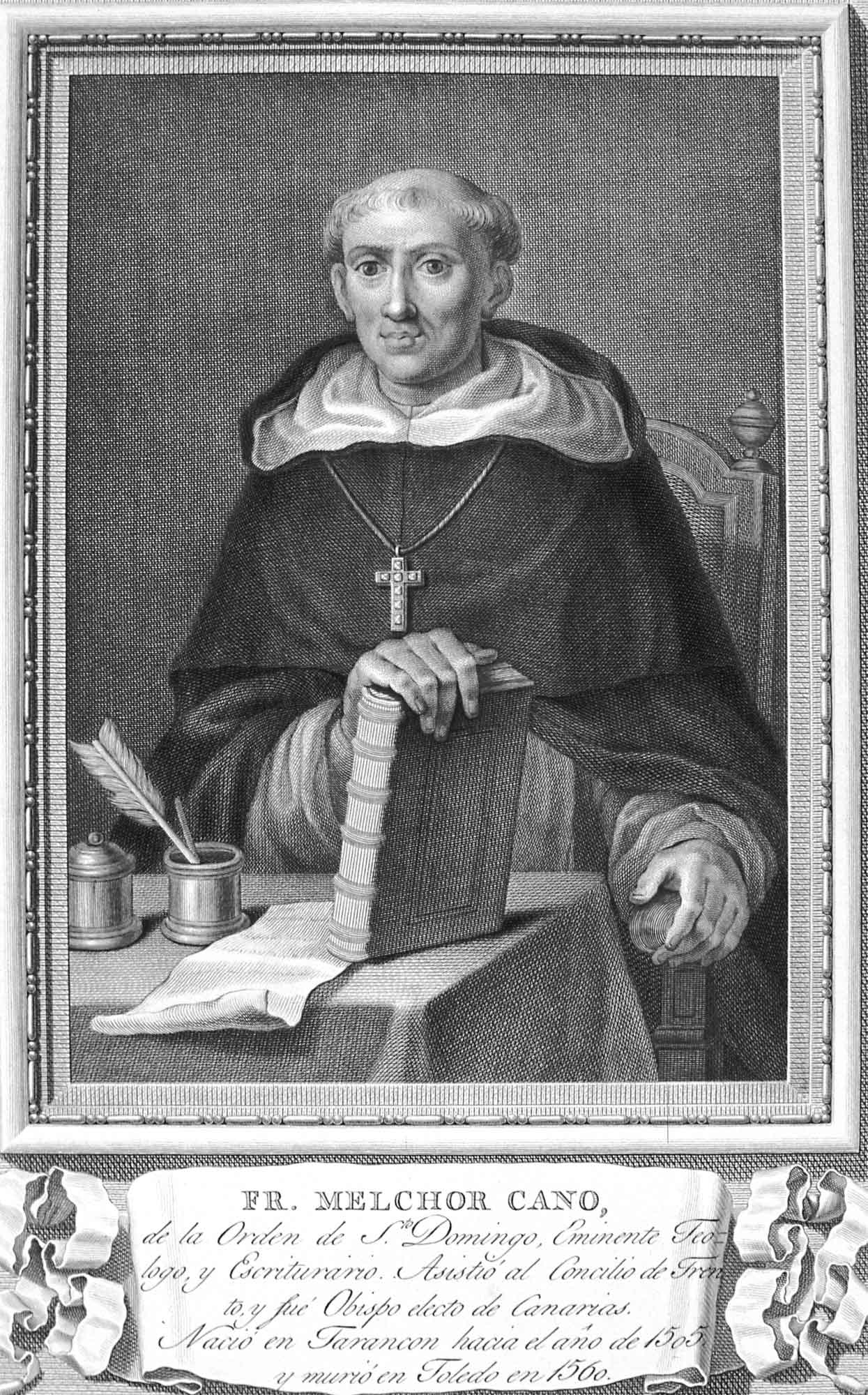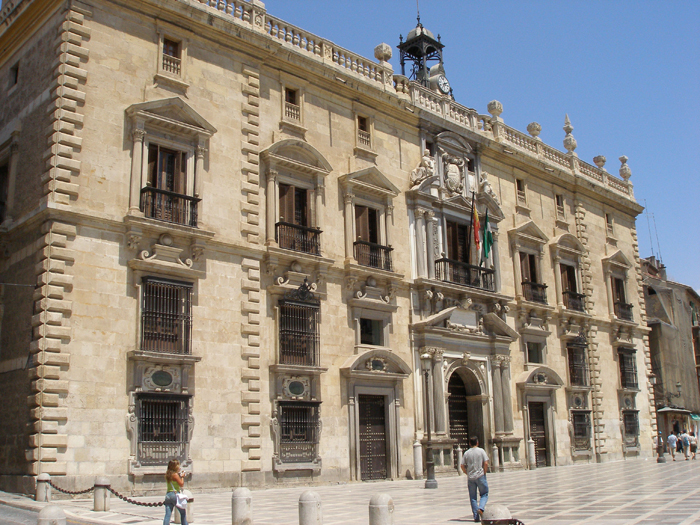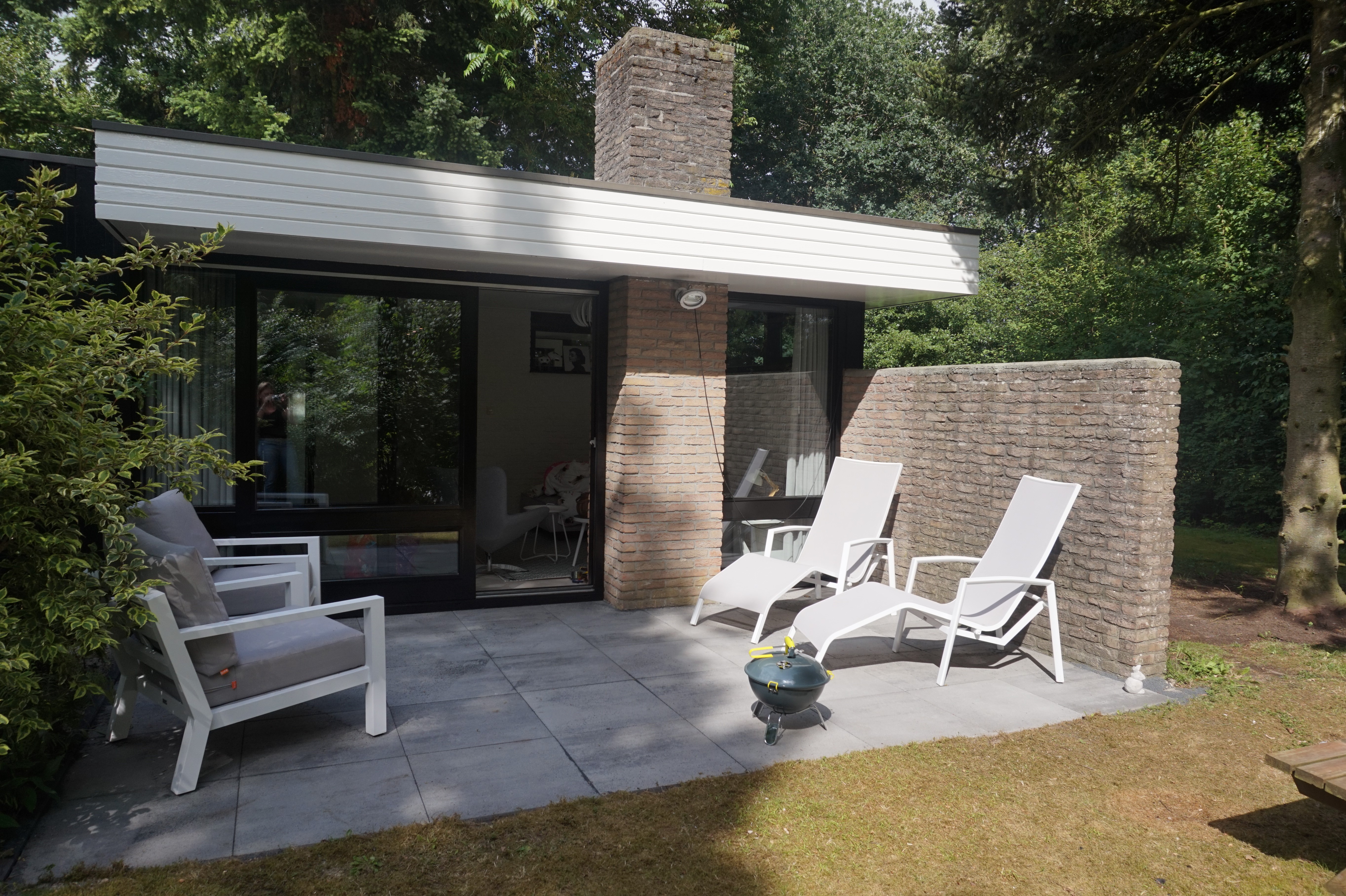|
Colegio De San Gregorio
The Colegio de San Gregorio is an Isabelline style building located in the city of Valladolid, in Castile and León, Spain, it was formerly a college and now is housing the Museo Nacional de Escultura museum. This building is one of the best examples of the architectural style known as Isabelline, which is the characteristic architectural style of the Crown of Castile region during the Catholic Monarchs' reign (late-15th century to early-16th century). Among other sections highlights its courtyard and its facade for its refined decoration, elegant proportions and the number of symbologies. It was founded as a teaching institution. Aimed at College of Theology for Dominican friars, it has acquired a doctrinal authority and acted as a spiritual and political hotbed in the Central region of Spain's Renaissance and Baroque periods. History The University of Valladolid was founded in the 13th-century during the Alfonso X of Castile the Wise's reign; as in other countries, the ... [...More Info...] [...Related Items...] OR: [Wikipedia] [Google] [Baidu] |
Castile And León
Castile and León ( es, Castilla y León ; ast-leo, Castiella y Llión ; gl, Castela e León ) is an autonomous community in northwestern Spain. It was created in 1983, eight years after the end of the Francoist regime, by the merging of the provinces of the historic region of León: León, Zamora and Salamanca with those of Castilla La Vieja ( Old Castile): Ávila, Burgos, Palencia, Segovia, Soria and Valladolid. The provinces of Santander and Logroño, which until then had formed part of Castile, opted out of this merger and formed the new Autonomous Communities of Cantabria and La Rioja respectively. Castile and León is the largest autonomous community in Spain in terms of area, covering 94,222 km2. It is however sparsely populated, with a population density below 30/km2. While a capital has not been explicitly declared, the seats of the executive and legislative powers are set in Valladolid by law and for all purposes that city (also the most populated ... [...More Info...] [...Related Items...] OR: [Wikipedia] [Google] [Baidu] |
Castile (historical Region)
Castile or Castille (; ) is a territory of imprecise limits located in Spain. The invention of the concept of Castile relies on the assimilation (via a metonymy) of a 19th-century determinist geographical notion, that of Castile as Spain's ("tableland core", connected to the Meseta Central) with a long-gone historical entity of diachronically variable territorial extension (the Kingdom of Castile). The proposals advocating for a particular semantic codification/closure of the concept (a '' dialogical'' construct) are connected to essentialist arguments relying on the reification of something that does not exist beyond the social action of those building Castile not only by identifiying with it as a homeland of any kind, but also ''in opposition'' to it. A hot topic concerning the concept of Castile is its relation with Spain, insofar intellectuals, politicians, writers, or historians have either endorsed, nuanced or rejected the idea of the ''maternity'' of Spain by Castile, ... [...More Info...] [...Related Items...] OR: [Wikipedia] [Google] [Baidu] |
Melchor Cano
Melchor Cano (1509? – 30 September 1560) was a Spanish Scholastic theologian. Clerical life He was born in Tarancón, New Castile, and joined the Dominican Order in Salamanca, where by 1546 he had succeeded Francisco de Vitoria to the theological chair in the university. A man of deep learning and originality, proud and a victim to the '' odium theologicum''. His only rival was the gentle Bartolomé Carranza, also a Dominican and afterwards archbishop of Toledo. At the university the schools were divided between the partisans of the two professors; Cano pursued his rival with relentless virulence, and took part in the condemnation for heresy of his brother-friar. The new society of the Jesuits, also met with his violent opposition; and he was not grateful to them when, after attending the Council of Trent in 1545, he was sent, by their influence, in 1552, as bishop of the far-off see of the Canary Islands. Consultatio theologica His personal influence with King Philip II ... [...More Info...] [...Related Items...] OR: [Wikipedia] [Google] [Baidu] |
Bartolomé De Las Casas
Bartolomé de las Casas, Dominican Order, OP ( ; ; 11 November 1484 – 18 July 1566) was a 16th-century Spanish Empire, Spanish landowner, friar, priest, and bishop, famed as a historian and social reformer. He arrived in Hispaniola as a layman then became a Dominican Order, Dominican friar and priest. He was appointed as the first resident Bishop of Chiapas, and the first officially appointed "Protector of the Indians". His extensive writings, the most famous being ''A Short Account of the Destruction of the Indies'' and ''Historia de Las Indias'', chronicle the first decades of colonization of the Spanish West Indies, West Indies. He described the atrocities committed by the colonizers against the indigenous peoples. Arriving as one of the first Spanish (and European) settlers in the Americas, Las Casas initially participated in, but eventually felt compelled to oppose, the abuses committed by colonists against the Indigenous peoples of the Americas, Native Americans. As a res ... [...More Info...] [...Related Items...] OR: [Wikipedia] [Google] [Baidu] |
Kingdom Of Granada (Crown Of Castile)
The Kingdom of Granada (; es, link=no, Reino de Granada) was a territorial jurisdiction of the Crown of Castile from the conclusion of the ''Reconquista'' in 1492 until Javier de Burgos' provincial division of Spain in 1833. This was a "kingdom" (''"reino"'') in the second sense given by the '' Diccionario de la lengua española de la Real Academia Española'': the Crown of Castile consisted of several such kingdoms. Its extent is detailed in Gelo del Cabildo's 1751 ''Respuestas Generales del Catastro de Ensenada'' (1750–54), which was part of the documentation of a census. Like the other kingdoms within Spain, the Kingdom of Granada was abolished by the 1833 territorial division of Spain. After the Granada War ended 2 January 1492, the old Muslim-ruled Emirate of Granada became part of the Crown of Castile. The kingdom was the location of a Muslim rebellion in 1499-1501 and after the Muslims were defeated and forcibly converted, a Morisco rebellion in 1568–1571. Follo ... [...More Info...] [...Related Items...] OR: [Wikipedia] [Google] [Baidu] |
Iglesia De San Pablo, Valladolid
The Iglesia conventual de San Pablo or San Pablo de Valladolid is a church and former convent, of Isabelline style, in the city of Valladolid, in Castile and León, Spain. The church was commissioned by Cardinal Juan de Torquemada between 1445 and 1468. It was subsequently extended and refurbished until 1616. Kings Philip II and Philip IV of Spain were baptized in the church, and it was visited by Napoleon.Napoleón stayed at the Royal Palace, located in front the church, on January 1809 during the Peninsular War (Spanish War of Independence). It is one of the buildings considered most emblematic of the city. History The church construction was commissioned by Cardinal Torquemada to replace a previous church, which had a timber ceiling and was adjacent to a Dominican convent that had been founded in 1270. After Torquemada's death, bishop Alonso de Burgos funded the building of the cloister, refectory, and lower façade, as well as of the adjacent Colegio de San Gregorio w ... [...More Info...] [...Related Items...] OR: [Wikipedia] [Google] [Baidu] |
Patio Del Colegio De San Gregorio (Valladolid)
A patio (, from es, patio ; "courtyard", "forecourt", "yard", "little garden") is an outdoor space generally used for dining or recreation that adjoins a structure and is typically paved. In Australia the term is expanded to include roofed structures such as a veranda, which provides protection from sun and rain. Construction Patios are most commonly paved with concrete or stone slabs (also known as paving flags). They can also be created using bricks, block paving, tiles, cobbles, or gravel. Other kinds of patio materials these days include alumawood, aluminum, acrylic, and glass. Patio options include concrete, stamped concrete, and aggregate concrete. Stamped concrete costs more, is known to be slippery, requires being resealed, and dyes typically fade in time. Aggregate concrete uses stones exposed giving its own style. Other common patio features include additional of reinforcement for hot tubs and additional steps from the home. Restaurant patio ''Patio'' is ... [...More Info...] [...Related Items...] OR: [Wikipedia] [Google] [Baidu] |
Isabella Of Castile
Isabella I ( es, Isabel I; 22 April 1451 – 26 November 1504), also called Isabella the Catholic (Spanish: ''la Católica''), was Queen of Castile from 1474 until her death in 1504, as well as Queen consort of Aragon from 1479 until 1504 by virtue of her marriage to King Ferdinand II of Aragon. Reigning together over a dynastically unified Spain, Isabella and Ferdinand are known as the Catholic Monarchs. After a struggle to claim the throne, Isabella reorganized the governmental system, brought the crime rate to the lowest it had been in years, and unburdened the kingdom of the enormous debt her half-brother King Henry IV had left behind. Isabella's marriage to Ferdinand in 1469 created the basis of the ''de facto'' unification of Spain. Her reforms and those she made with her husband had an influence that extended well beyond the borders of their united kingdoms. Isabella I of Castile and Ferdinand II of Aragon are known for being the first monarchs to be referred to as ... [...More Info...] [...Related Items...] OR: [Wikipedia] [Google] [Baidu] |
Pope Innocent VIII
Pope Innocent VIII ( la, Innocentius VIII; it, Innocenzo VIII; 1432 – 25 July 1492), born Giovanni Battista Cybo (or Cibo), was head of the Catholic Church and ruler of the Papal States from 29 August 1484 to his death in July 1492. Son of the viceroy of Naples, Battista spent his early years at the Neapolitan court. He became a priest in the retinue of Cardinal Calandrini, half-brother to Pope Nicholas V (1447–55), Bishop of Savona under Pope Paul II, and with the support of Cardinal Giuliano Della Rovere. After intense politicking by Della Rovere, Cibo was elected pope in 1484. King Ferdinand I of Naples had supported Cybo's competitor, Rodrigo Borgia. The following year, Pope Innocent supported the barons in their failed revolt. In March 1489, Cem, the captive brother of Bayezid II, the sultan of the Ottoman Empire, came into Innocent's custody. Viewing his brother as a rival, the Sultan paid Pope Innocent not to set him free. The amount he paid to Pope Innocent ... [...More Info...] [...Related Items...] OR: [Wikipedia] [Google] [Baidu] |
Alonso De Burgos
Alonso (or Alfonso) de Burgos (before 1477 – 1499) was the royal confessor of Ferdinand and Isabella. He was born of a noble family in Burgos and died at Valladolid in 1499. He was conspicuous for learning before his entrance into the Dominican order, early in life. His preaching attracted the notice of Ferdinand and Isabella, who selected him as royal confessor. On the recommendation of the latter, Alfonso was appointed to the see of Córdoba by Sixtus IV, 30 April 1477. Remaining there only four years, he was transferred to the Bishopric of Cuenca, and in 1484, or according to P. B. Gams (''Series Episcoporum'', P. 64) in 1486, to Palencia. At the same time he held successively the office of Grand Chaplain of the Court, Counsellor of the Catholic King, and President of the Council of Castile. In the latter capacity he was instrumental in getting pecuniary grants from the crown for Columbus. During the years 1487 and 1488 he obtained eight thousand pounds at various times fo ... [...More Info...] [...Related Items...] OR: [Wikipedia] [Google] [Baidu] |
Pope Gregory I
Pope Gregory I ( la, Gregorius I; – 12 March 604), commonly known as Saint Gregory the Great, was the bishop of Rome from 3 September 590 to his death. He is known for instigating the first recorded large-scale mission from Rome, the Gregorian mission, to convert the then largely pagan Anglo-Saxons to Christianity. Gregory is also well known for his writings, which were more prolific than those of any of his predecessors as pope. The epithet Saint Gregory the Dialogist has been attached to him in Eastern Christianity because of his '' Dialogues''. English translations of Eastern texts sometimes list him as Gregory "Dialogos", or the Anglo-Latinate equivalent "Dialogus". A Roman senator's son and himself the prefect of Rome at 30, Gregory lived in a monastery he established on his family estate before becoming a papal ambassador and then pope. Although he was the first pope from a monastic background, his prior political experiences may have helped him to be a talented ad ... [...More Info...] [...Related Items...] OR: [Wikipedia] [Google] [Baidu] |
Alfonso X Of Castile
Alfonso X (also known as the Wise, es, el Sabio; 23 November 1221 – 4 April 1284) was King of Castile, León and Kingdom of Galicia, Galicia from 30 May 1252 until his death in 1284. During the April 1257 Imperial election, election of 1257, a dissident faction chose him to be king of Germany on 1 April. He renounced his claim to Germany in 1275, and in creating an alliance with the Kingdom of England in 1254, his claim on the Duchy of Gascony as well. Alfonso X fostered the development of a cosmopolitan court that encouraged learning. Jews, Muslims, and Christians were encouraged to have prominent roles in his court. As a result of his encouraging the translation of works from Arabic and Latin into the vernacular of Castile, many intellectual changes took place, including the encouragement of the use of Castilian language, Castilian as a primary language of higher learning, science, and law. Alfonso was a prolific author of Galician-Portuguese lyric, Galician poetry, such a ... [...More Info...] [...Related Items...] OR: [Wikipedia] [Google] [Baidu] |







